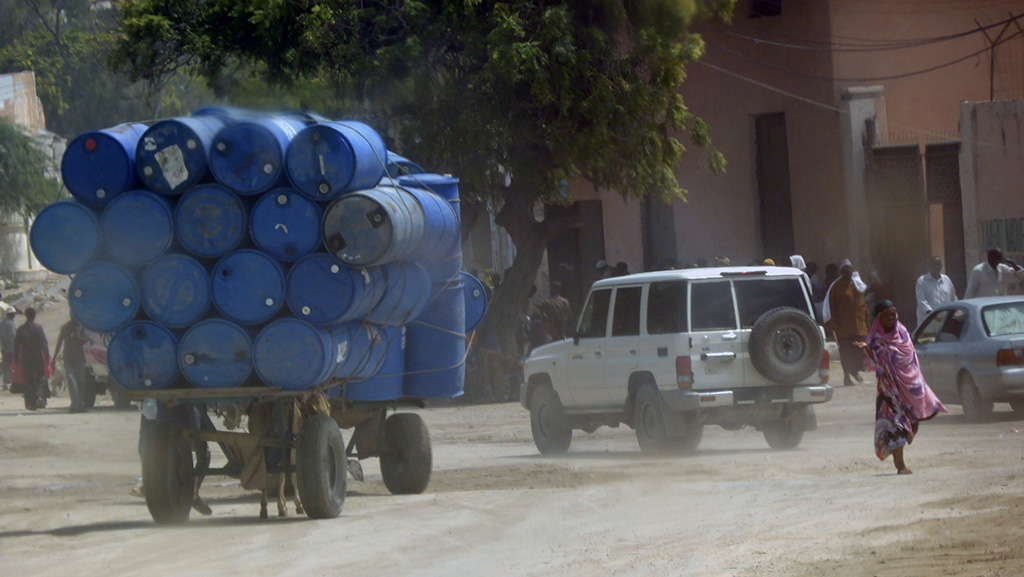In recent years, the concept of capacity building has taken over the world of development. Most issues, regardless of the field, are framed as issues of building capacity.
Surprisingly, perhaps, a similar trend has caught up with the corporate boardrooms world of New York and Singapore. Places that would not be traditionally associated with failed state and development.
Capacity building is a convincing concept, and while it doesn’t have a logical competitor, it does have an alternative. Some organizations chase performance more directly through aggressive benchmarks, milestones and production investments. To an extent this is portrayed as a dichotomy; performance versus capability.
In corporate research there is a line of thinking that performance follows capability. Companies that sacrifice capability on the performance altar will loose. There is increasingly quantitative evidence to support this idea.
Indeed, research by business schools and the large consultancy firms suggest that there is a causal relationship: capability drives performance.
But while the evidence from mature market is quite extensive, much less analyses have been performed for public institutions in fragile contexts. A couple of constraints might explain this lack of analysis. First, measuring performances for the public sector, in a comparable manner, is challenging even in high-functioning places. Second, this is exacerbated in fragile contexts by the lack of access and lower quality of data.
To start off this line of thinking for a fragile state context, here are two emerging themes to consider when balancing investments in performance versus capability in a developing country. This is based upon our extrapolation of the main ideas in both corporate and development aid community:
Be conventional, but do it well.
Approaches to build capability are quite conventional in every organization in the world and is there any reason to think it is fundamentally different in a fragile state?
Approaches to strengthen capability in other organizations, i.e global businesses, typically evolve around two main themes. These are the levers that managers can impact and change, thereby building increased capability. They are about:
- the “hard” factors such as strategy, structures and systems, including technology, process workflows and infrastructure.
- Soft factors, evolving around issues such as skills, leadership and communication.
The diagnostics and identification of the current situation and problems try to capture both formal and informal practices and behaviors. Solutions also try to address both the formal and the informal aspects that guide behavior.
While there is very little specific research on these issues form fragile states, is there really any basis to assume that it is fundamentally different in a fragile state?
In support, of the perspective that conventional approaches are most useful, is also a recent World Bank “paper” (actually 415 pages) analyzing high performing organizations in fragile states. Among their main findings is:
“Many of these elements [ed.note success factors] have long been noted as contributors to organisational success in developed countries, representing the conventional wisdom in organizational management theory more generally. Such conclusions have not been given sufficient weight in operational approaches to supporting fragile country states”. “
As such, building state capability is not necessarily a different approach. But as in all aspects of life; it can be done well, or it can be done poorly. Quality matters. From how the problems are defined to how the program is implemented.
Organizations around the world choose outside assistance for such work, and the quality of the technical assistance also differs greatly. Choose wisely.
Don’t throw the baby out with the bathwater, performance enhancements are still needed
There may be a causal relationship where capability drives performance, but both are needed and it is not a chicken or egg situation. A government treasury operation need to perform. Revenue collection and budget reliability are key hard metrics for very good reasons.
A fragile state cannot afford not to drive performance against these, with whatever means are available to them, and cannot wait for longer term investments in capacity to kick in and deliver results.
Both are needed and there is no conflict. The relative weight of investments may of course matter, but a complete shift will ignore one for the other and will not succeed.
Indeed, corporate investment budgets still empahsize operations and performance. And they have to, to be able to deliver the goods or services to their markets. Investments in capability may be less expensive in financial terms. This is more about leadership attention, motivation and culture. While difficult to change, it may be cheaper.
(i) Barma et.al ,. 2014. Institutions Taking Root : Building State Capacity in Challenging Contexts.
Ivar Strand is founder and Managing Partner of Abyrint. Magali van Coppenolle is Senior Associate with Abyrint.

